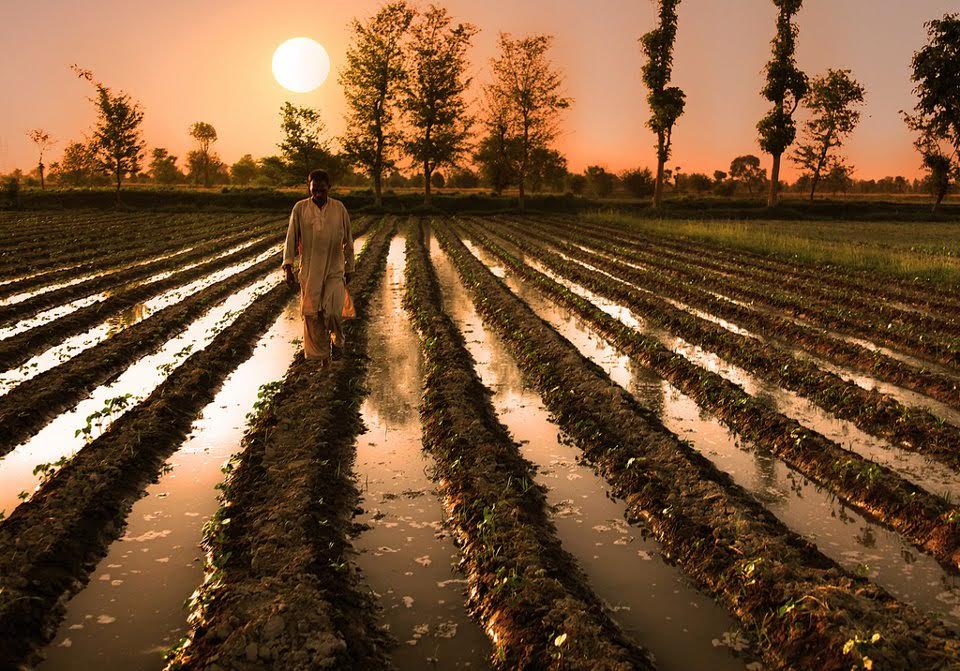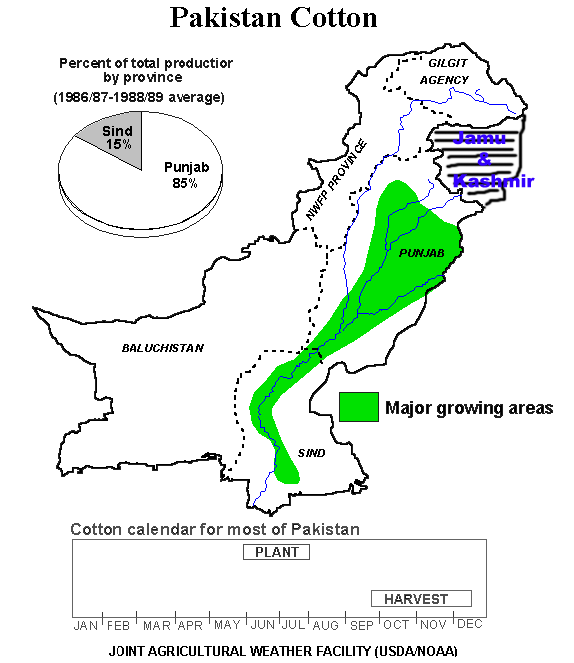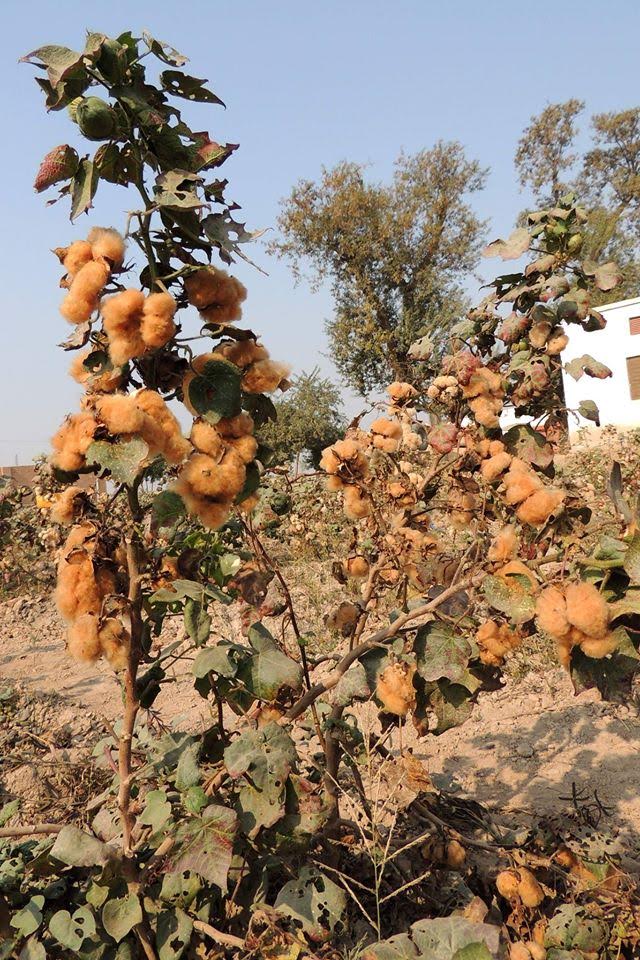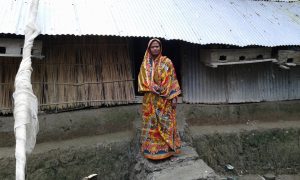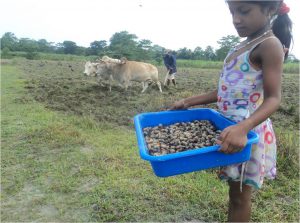Heavy rainfall, high temperatures and major pest outbreaks have taken a heavy toll on Pakistan’s cotton growing districts of Punjab and Sindh province this year. Pakistan’s Ministry of Textile Industry has expressed concern over the 28% drop in cotton production during 2015-16 caused by climate change-induced phenomena.
Khalid Abdullah, the country’s cotton commissioner, said that the erratic weather has proved lethal for the production of cotton, one of the country’s key cash crops. Last year was the hottest season in the cotton growing regions over the past decade and with similar weather conditions predicted for next year, cotton production may continue to slide. However, government incentives, such as lower costs for fertilizer and pesticide, will help farmers compensate their losses, he said.
According to the Pakistan Economic Survey 2015-16, cotton contributes 1% of Pakistan’s GDP and 5 % of the country’s agriculture value added. The survey shows cotton production has dropped dramatically with the industry missing its 5.5% growth target.
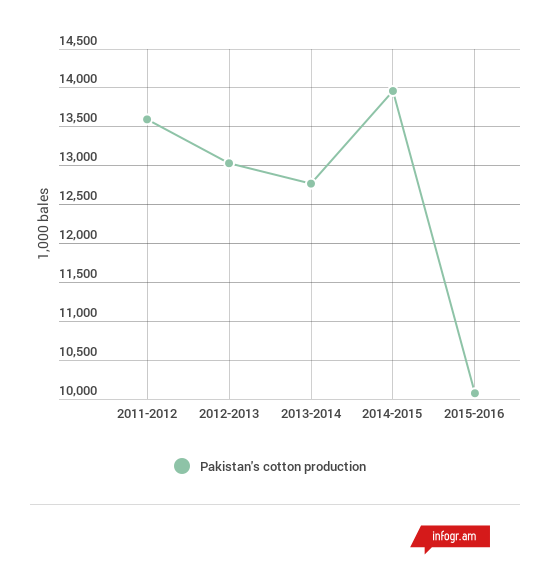
To maintain the supply of cotton to the textile industry, imports of raw cotton increased to 345,000 tonnes, a growth of over 250% compared to the same period last year.
The country’s textile ministry recently informed a parliamentary committee on agriculture that prolonged heavy showers and high temperatures had resulted in pest outbreaks, such as white fly and pink boll worm. In addition, cotton planting was delayed due to the late wheat harvest because of erratic weather that had affected crop development.
Many say the cotton outlook is even bleaker. Farmer and activist Ibrahim Mughal from Multan city in Punjab province challenged the government figures saying production had declined by 40%. “The government has fudged the figures,” he said, explaining that officials have reduced the standard weight of the cotton balls to increase productivity figures. An official in the textiles ministry said, on the condition of anonymity, that there was at least a 32% decline in production.
Goher Ali, who has been growing cotton for more than fifty years, said that the last year was the worst in terms of production. “We lost a major chunk of crop due to the heavy rains followed by severe temperature as our crop was attacked by pink boll worm,” he said. “Cotton is a very sensitive crop and vulnerable to many climatic factors,” he pointed out.
GM cotton to blame?
As well as erratic weather, farmers blame the widespread use of Bt Cotton seeds for the low production. The genetically modified cotton variety has been used in Pakistan since 2010 and now makes up 88% of the crop area. The GM crop is vulnerable to pest attacks and so needs pesticides in large quantities that poor farmers cannot afford, said Mughal. He urged the government to focus on research that supports farmers, such as introducing indigenous seed varieties, rather than promoting the interests of multinational companies. Experts and farmers recently voiced strong concerns over the recent decision of the Ministry of Climate Change to issue multinational companies with licenses for GM corn and cotton in Pakistan without following proper procedures.
Pakistan is using the first generation of BT cotton biotechnology, while more advanced varieties have not been introduced because of the lack of legal protection for such patents in Pakistan. Farmers believe this BT cotton is ineffective against many pests such as pink boll worm. Ejaz Ahmed, a farmer from Bahawalpur, blamed the agriculture extension department for not educating the farmers about the impacts of climatic change and pesticide use.
Shift away from cotton
People are now shifting to other crops and vegetable after being disheartened by the performance of this cash crop. Cotton commissioner Abdullah estimates that this year about 15% less cotton was sown compared to last year and 25 % less than the target set for the current year. The cotton growing area has shrunk to 2.46 million hectares in 2016-17 from 2.91 million hectares in 2015-16. The ministry has urged research institutes to prioritise introducing new crop varieties that can withstand climate change and pests. The National Biodiversity Committee (NBC) has been asked to monitor Bt Cotton varieties.
The ministry is also training farmers to use pesticides better control pink bollworm and introduce new varieties and practices to minimise losses, said Abdullah. So far 4,600 cotton farmers have been trained in more than 60 programmes across the three provinces of the country. The Punjab provincial government has established a Cotton Crop Management Group to develop effective policies after the poor production of the crop in country’s largest province.
Some farmers have returned to growing cotton following the incentives announced by the federal government, Ali said. However, most of the government’s incentives and subsidies had not reached farmers at the grassroots level, he complained. The benefits all go to middlemen and businessmen with the connivance of the authorities.
